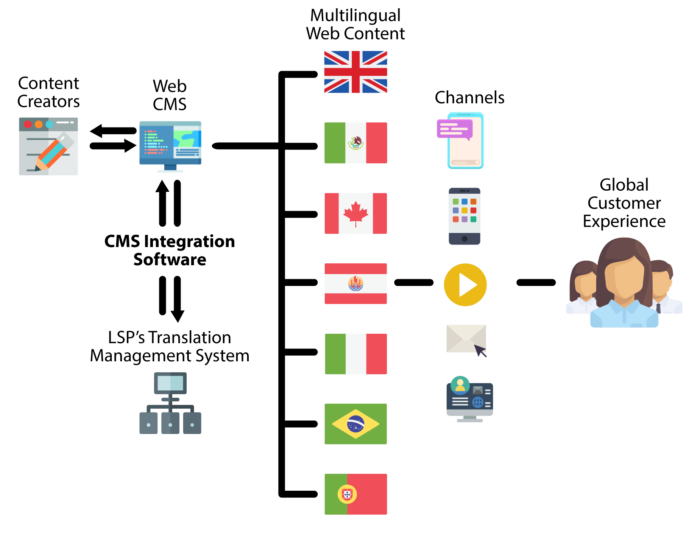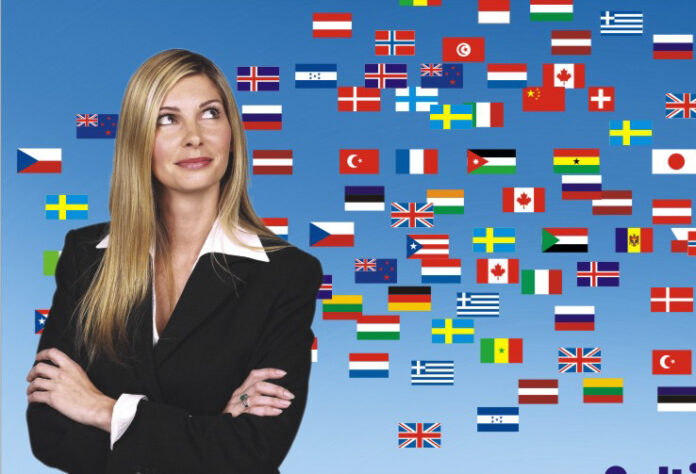If you publish content or conduct commerce on the internet in just one language, you’re leaving big money on the table. Globalizing your blog, shop or other web content by translating and localizing it for new foreign markets may be the most cost-effective way to expand your worldwide audience, acquiring new subscribers, customers, and viewers. We’ll look at the various ways for you to expand into additional languages and markets: working with professional localization agencies, engaging freelance translators, taking the DIY approach with machine translation — or a combination of these approaches. The goal: to go global without getting lost in translation.

Why Globalize? How Do You Translate “Best Bang for the Buck”?
The reasons for adding additional language versions of your website and marketing collateral are many: additional audiences, customers, pages, advertising, pageviews, and clicks. It all adds up to more money and faster growth, at a rate that may exceed the organic growth within your native language. So, too, the cost for generating additional language versions is usually a relatively small fraction of the cost for creating original content. All these reasons provide strong motivation for adding new language versions as a primary engine of growth. The process is known as globalization: adding local versions in an integrated way so that your site or marketing pack is truly global, ready for international consumption. If you’re wondering how is it different from localization, quickly hop over here if you need more insights.
Pros and Cons of Working with the Pros
But there is, of course, an associated cost to this process. As in most things, money talks – in every language under the sun. If you have a generous budget and limited personal or professional time to spare, then the obvious next logical step towards globalization is to hire a professional language services provider. According to Ofer Tirosh, CEO of Tomedes – specializing in translation services, with more than 200 language pairs supported – working with an agency offers the most scalable approach to a global solution. “Professional translation is the main building block to a global brand, enabling you to add many languages rapidly, with the incremental costs of each additional language diminishing.” Still, that scalability and professionalism come at a relatively high price compared to lower-budget options we’ll discuss. You also need to consider whether the costs justify the benefits of setting up local offices outside your home turf.
Marketing translations, localization services, website localization– these are the bread-and-butter of a translation or localization company these days. The top tier of translation companies offer you free quotes and firm delivery date, pricing the work according to the source documents in the case of translation and according to the content of your website, per language, in the case of website localization. Apps and other software products have a complex localization process, which falls beyond this article’s scope.

Freelance Localization and Translation is Not Free
In addition to the well-heeled professional language services providers, there is a broad class of freelance linguists and translators. You can find them offline and online, and many of them are simply bilingual people who moonlight and scratch together some beer or latte shekels with an occasional document or two for friends and colleagues. With respect to friendly favors, avoid going this route. More advantageous avenues are available.
These days, those needing a translator on a budget tend to turn to one of the bustling freelance networks where cunning linguists and clever copywriters offer their talented tongues to churn out copy for the Almighty Dollar, Euro or Pound Sterling. Platforms like Upwork, Freelancer and Fiverr are their officers, and you can peruse their profile and riffle through their ratings and review, seeking out the polyglot who got the proficiencies you require. Say you want to a mother-tongue Spanish translator to translate a webpage: make sure that you specify the language pair (e.g., English to Spanish). If you’re looking for resources in one of the most popular languages, like English or Spanish, you will be overwhelmed with the choices.

5 Tips When Hiring Freelance Translators
- These days anyone can translate a webpage. Keep your eyes peeled for those with domain-specific skills: experience in the law, accounting, science, or whichever specialty your job requires.
- Watch out for rank amateurs. Professional translators, even among freelancers, have professional training, certifications, and portfolios you can review. If they lack these, avoid them.
- Don’t depend on just one freelancer. Freelancers are solo human beings. They get sick, they get drunk, and sometimes they get lost. So don’t rely on just one.
- The Perfect Pair protects you. To protect yourself against unpleasant surprise, we suggestion hiring freelancers in pairs, a relatively inexpensive primary and a top-rate proofreader or final editor. The latter will check the work of the former. And if the former flubs, the latter can step in to save the day.
- Watch out for Google Translators. As noted below, the quality of machine translation keeps improving. This may tempt some sleazy or lazy translators to pass off Mr. Google’s work as their own. Keep your eye out for this and prohibit this practice explicitly in your contract with the freelancer you choose.

Welcome to the Machine …. Translation
In 2014, a machine translation revolution took place when the Artificial Intelligence technique of neural networks was applied to translating texts. Rather than approaching texts on a word-by-word or even sentence-by-sentence basis, this approach processes whole documents.
Studies since have shown a substantial improvement in the perceived correctness of neural machine translations, with software algorithms beginning to approach the quality of human translators for some highly structured texts like weather reports, legal documents, and government reports.
While expert human translators still hold an edge when it comes to less structured and creative source documents, tools like Google Translate and Microsoft Translator can be your ally when it comes to internal translations and as a means to check the work of the translators or agencies you hire. These AI-driven Robo-translators are also valuable for crafting formal letters, help messages, and autoresponders. Just make sure to have a human being with the relevant mother-tongue check the machine’s work to avoid embarrassing mistakes.









